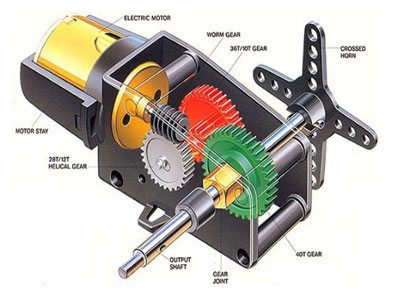Key Takeaway
To protect your servo motor, start with electrical safeguards. Use surge protectors and fuses to prevent voltage spikes and overloads. Ensure the motor is connected to a stable power supply to avoid damage from fluctuations.
Mechanical protection is just as important. Regularly clean and lubricate the motor’s moving parts to prevent wear. Dust and debris can cause overheating, so keep the motor clean. If the motor operates in high-temperature environments, consider adding cooling systems like fans or heat sinks. Combining both electrical and mechanical protection ensures your servo motor runs smoothly and has a longer lifespan.
Protective Measures for Servo Motor Operation
To ensure long-lasting operation of your servo motor, you need to implement basic yet crucial protective measures. One of the most important steps is ensuring the motor is properly grounded. Grounding the motor helps prevent issues caused by electrical interference and minimizes the risk of shocks and power surges. Furthermore, always make sure the servo motor is connected to a stable power source. Unstable power can wreak havoc on the motor’s internal components, causing wear and tear over time.
Another vital protective measure is controlling the operating environment. Dust, moisture, and even excessive vibrations can affect a motor’s performance. Consider installing the motor in a controlled environment where these factors are minimized.

Overcurrent Protection in Servo Motors
Overcurrent is one of the most common issues that can damage servo motors. When the motor pulls too much current, it overheats, leading to potential motor burnout. Installing overcurrent protection devices, such as circuit breakers and fuses, is essential. These devices automatically cut off the power supply when current levels exceed the safe limit, preventing overheating and further damage.
The trick is to choose the right type and rating for your fuses or circuit breakers, as improper devices may either fail to protect the motor or cut off the power unnecessarily. Additionally, modern servo motors are often equipped with internal overcurrent protection mechanisms, but external protection adds an extra layer of safety. Protecting your motor from current overload not only ensures that it operates within its intended parameters but also saves you from expensive repair costs down the line.
Surge Protection for Servo Motors
Voltage spikes, often caused by power grid fluctuations or lightning strikes, can severely damage the sensitive electronic components inside a servo motor. A sudden surge in voltage can cause insulation breakdown and burn out the motor windings. This is where surge protection comes in. Installing surge protectors specifically designed for industrial applications is a critical safeguard for your motor.
Surge protectors work by diverting excess voltage away from the motor, ensuring it only receives the power it needs. A good surge protection system will not only protect the motor but also prevent downtime by keeping your equipment running smoothly. Many industries use uninterruptible power supplies (UPS) in combination with surge protectors to provide an additional layer of protection during power outages or voltage spikes. By investing in surge protection, you’re essentially buying insurance for your servo motor against unpredictable electrical events.
Environmental Factors and How to Shield Motors
Environmental conditions play a huge role in how well a servo motor performs and how long it lasts. Motors operating in environments with high humidity, extreme temperatures, or excessive dust and debris are more prone to malfunction. One of the first things you should do is to shield the motor from these adverse conditions. For instance, if the motor is exposed to dust or dirt, installing dust covers or protective enclosures can significantly extend its lifespan.
Temperature control is another critical factor. If the motor operates in a high-temperature environment, consider using cooling systems like fans or heat sinks to maintain optimal operating temperatures. Humidity, too, can damage electrical components by causing corrosion over time. Therefore, placing the motor in a humidity-controlled environment or using moisture-resistant materials is essential. Proper shielding from environmental factors helps prevent unexpected failures and extends the motor’s lifespan.
Maintenance Practices to Prevent Damage
Routine maintenance is your first line of defense in protecting a servo motor from damage. Simple tasks such as regularly cleaning the motor’s housing and lubricating moving parts can go a long way in preventing wear and tear. Over time, dirt and debris can accumulate and cause operational issues, so keeping the motor clean is essential. Lubrication is another important aspect, particularly for the motor’s bearings. Proper lubrication minimizes friction and prevents the bearings from wearing out prematurely.
Additionally, regularly check the electrical connections to ensure that none have become loose or corroded. Electrical faults can often start from something as simple as a loose connection. Also, don’t forget to perform insulation tests regularly to check the motor’s windings for any potential electrical faults. These routine checks and maintenance activities might seem small but are critical for keeping your motor running efficiently and preventing bigger problems later.
Conclusion
Protecting your servo motor involves a combination of electrical and mechanical safeguards. From overcurrent and surge protection to environmental shielding and regular maintenance, each step is crucial for ensuring the motor’s longevity and performance. Implementing these protective measures helps reduce the risk of breakdowns, minimizes repair costs, and extends the overall lifespan of the motor. By taking proactive steps in protection and maintenance, you can ensure that your servo motor operates efficiently and reliably for years to come.
